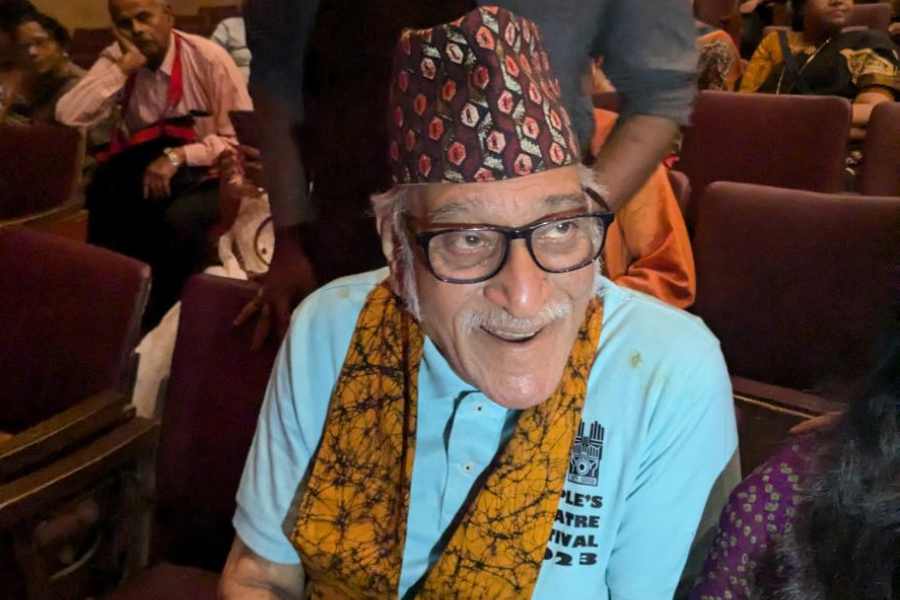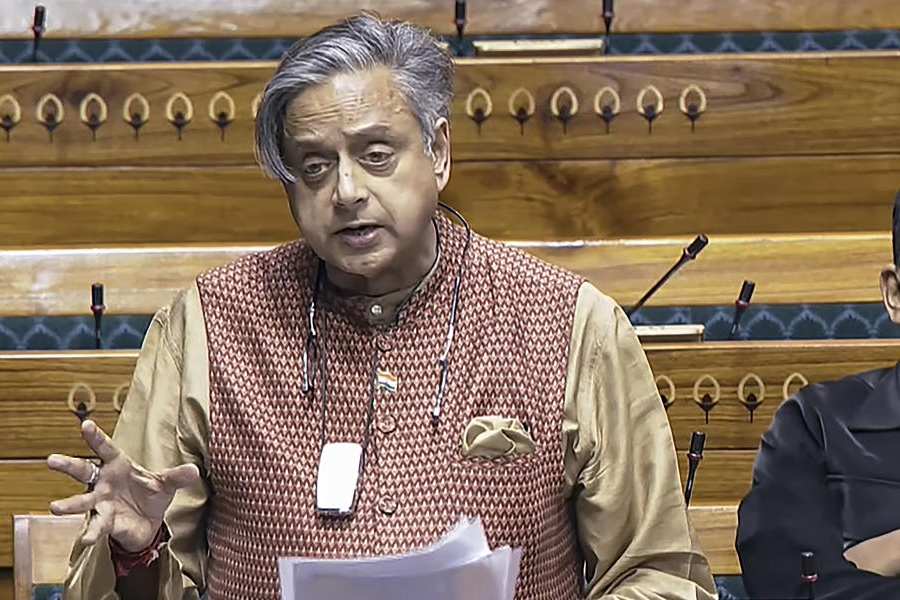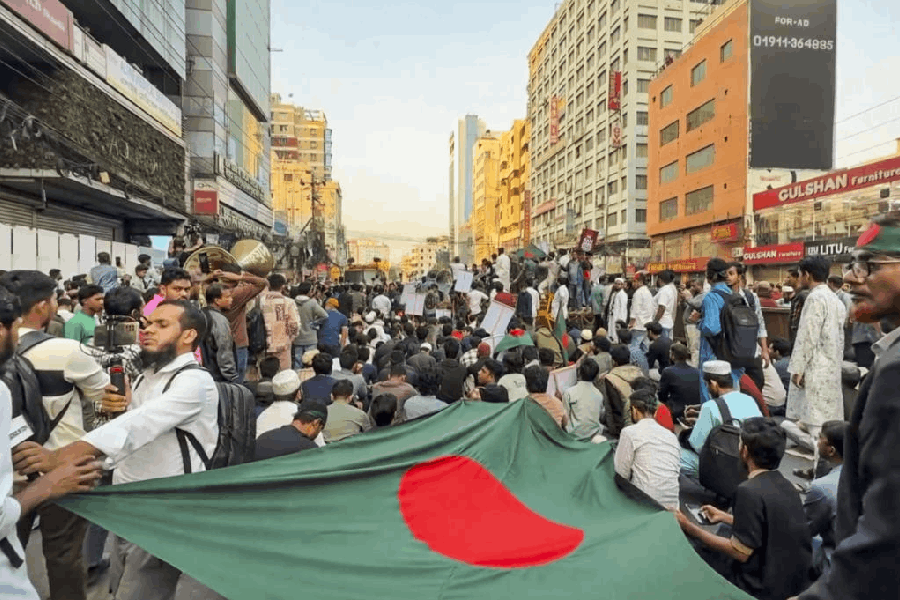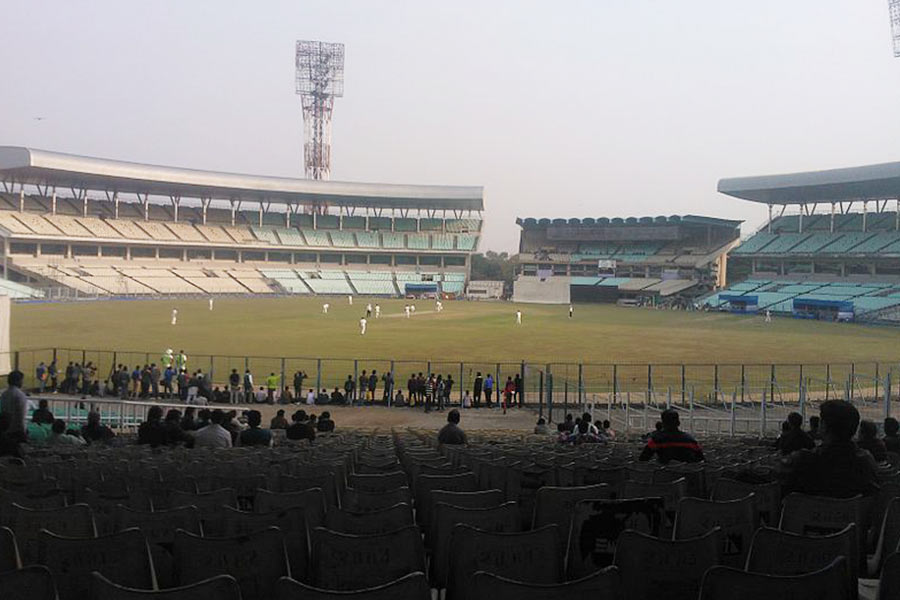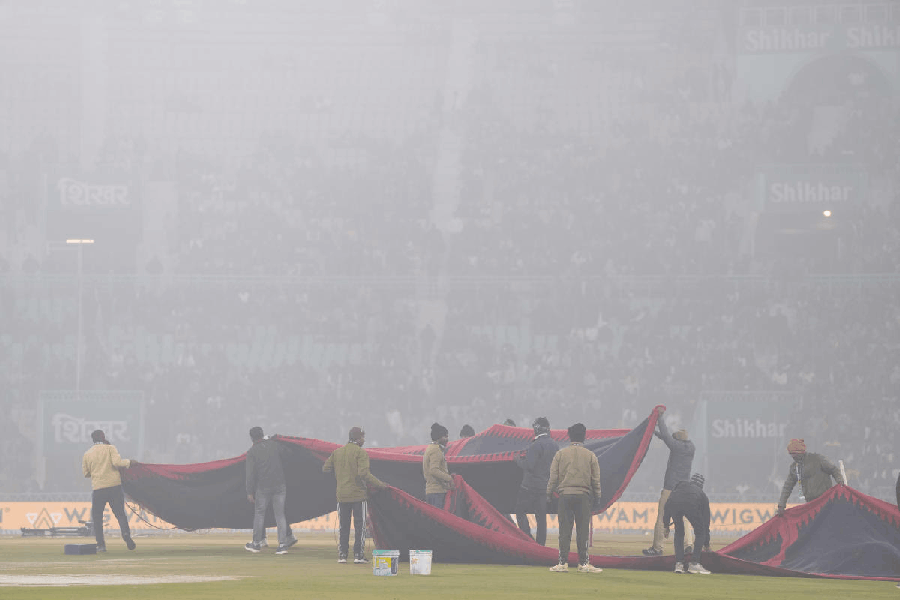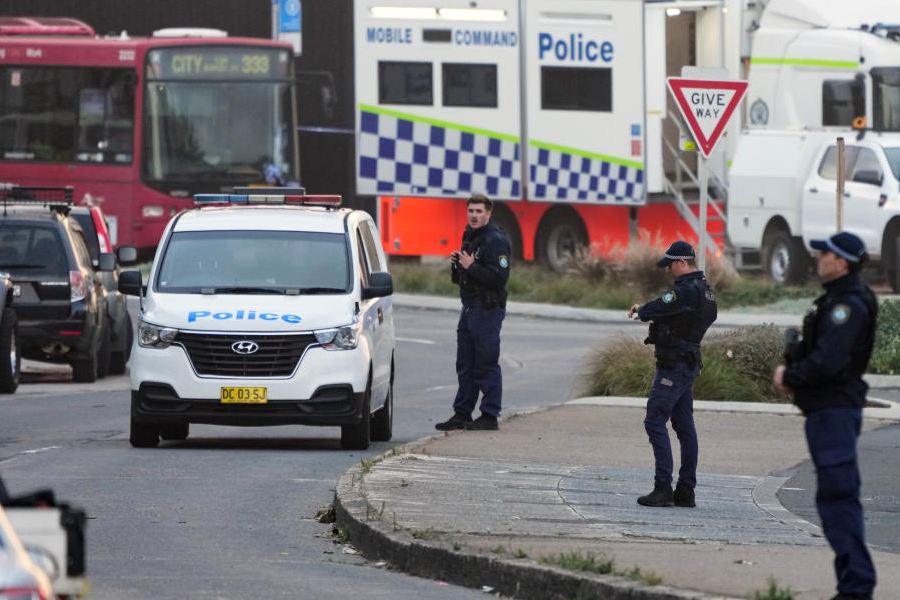There are not too many actors who can claim to read people’s minds with some accuracy. Mohan Agashe can. “In the initial years, I believed my psychiatric practice and acting would run along two parallel tracks but later, at a subconscious level, I realised these two vocations merge seamlessly,” he tells me when I meet him at Calcutta’s Academy of Fine Arts.
It is the inaugural day of the annual festival of the group Purba Paschim. There is to be a solo performance of Tagore’s Streer Patra by Seema Biswas. Agashe and I are sitting in the green room and talking. The actress Moon Moon Sen is also an invitee and she is sitting next to Agashe. She is supposed to felicitate Biswas once the performance is over.
Agashe and Sen have been friends since they acted in Kissa Kathmandu Mein in 1986, a Hindi mini-television series directed by Sandip Ray and aired on Doordarshan. Once in a while, Sen participates in the conversation, helps Agashe when he cannot recall a name or a specific here and there. The older man is a lively talker. When a television journalist asks him for a “byte”, he makes a mock attempt to bite the mic. Sen says, “Mohan, you haven’t lost your sense of dark humour since we first met.”
Agashe asks Sen if she has had a chance to watch his recent film Outhouse. The 2024 film is about ageing and the need for companionship. Agashe and Sharmila Tagore play the lead pair.
That day, with his grey sideburns, moustache and locks of grey peeping out of a Nepali topi, Agashe looks much older than his stage self in Vijay Tendulkar’s Ghashiram Kotwal. I had seen a production in 1992 wherein he played the Machiavellian
Nana Fadnavis.
I remark on his interesting headgear and what follows is a minute or two of topi talk. As he tells it, he has been wearing a variety of topis ever since he visited Kathmandu in 1986 to play the role of the bald Jatayu. He is proud of his collection of 100 plus topis gifted to him by people over the years.
I notice another headgear in his hand. The traditional Marathi puneri pheta or turban is a gift from this trip. Says the 72-year-old mysteriously, “A gift from a senior actor and friend who I admire.”
That person turns out to be Rudraprasad Sengupta, who is also present. Agashe turns to me and says, “I first met him in 1978 when he invited us to perform Ghashiram Kotwal at this very venue.” While the play was on, news arrived that the Babri Masjid had been brought down. He continues, “It was peak monsoon. The festival got cancelled and we were all stranded for a week in Calcutta.”
After the inauguration ceremony, Agashe says to me, “You seem to be interested in my psychiatry career. Hold the thought; I shall answer your questions during the interval.”
Together we watched Biswas’s spellbinding performance. Streer Patra is about an emancipated woman who walks out of her failed marriage and her joint family.
The interval bell rings, and we start to talk about Agashe’s experience of research and psychological rehabilitation of the 1992 Latur earthquake victims. He says, “That was fascinating work. While some of the survivors moved on and rebuilt their lives, many others kept on blaming their failures on the earthquake.”
He tells me how his vocation as a psychiatrist has helped him get a better insight into the minds of the characters he plays. “I can emote and project a spectrum of facial expressions from having studied thousands of patients in agony and ecstasy.”
He feels his medical practice has often had a deep impact on his plays. His
latest Marathi play Jara Samjun Ghya delineates the doctor-patient relationship. It portrays how a doctor has to be empathetic and considerate, and patients need to understand the limitations of the doctor and place confidence in the medical treatment. His next play, tentatively titled The Last Supper, is based on a long conversation between Swami Vivekananda and his disciple Sister Nivedita purportedly on the night before the monk’s death. Vivekananda was 39 at the time.
Our conversation moves to his experience of working with Satyajit Ray in Sadgati, which is based on Munshi Premchand’s short story about the harsh realities of the Indian caste system. “That was Doordarshan’s first colour telefilm,” he says. The location of the film was Raipur, then a city in Madhya Pradesh. Agashe adds, “Manikda transformed Premchand’s classic into such a brilliant visual essay.”
The interval is up. The shrill bell rings out calling for everyone’s attention. Just then a woman comes up to Agashe and asks for a selfie. Agashe points to the stage and says, “Now, we have to focus on the stage, on Seema’s work. Aaiye, dekhiye.”

